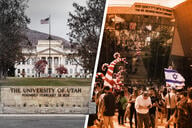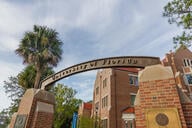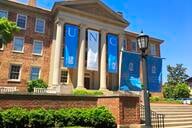You have /5 articles left.
Sign up for a free account or log in.

Istockphoto.com/urfinguss
In 2016, Christopher B. Howard took a relatively uncommon career leap, leaving the presidency at an old-guard liberal arts college -- the all-male Hampden-Sydney College in Virginia -- to lead the career-oriented Robert Morris University in suburban Pittsburgh.
He’s one of a noteworthy handful of presidents to have eschewed the well-worn career ladder in which the president of a liberal arts college climbs to the next rung of prestige by taking the presidency at a better-resourced liberal arts college or a research-focused university. Members of this new group of leaders often say they are seeking fresh challenges and attempting to serve new generations of students that tend to be more diverse, less wealthy and more focused on jobs than those attending college in the past.
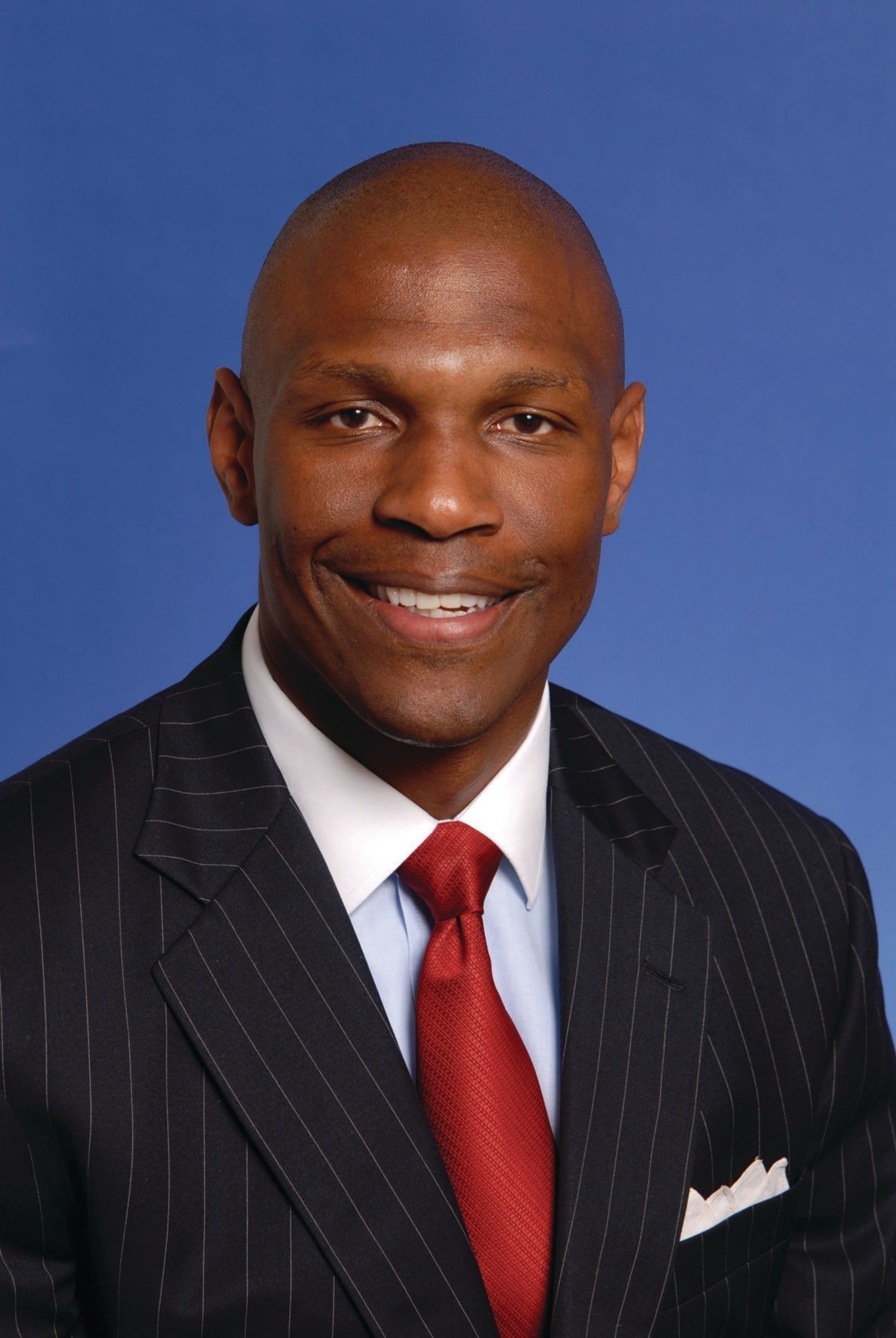 They continue to pledge loyalty to their liberal arts backgrounds but add their own unique spin, aligning with their new homes at career-oriented institutions -- and, often, with their own personal histories. Howard, for example, is a graduate of the U.S. Air Force Academy, a Rhodes Scholar and a Harvard M.B.A. He uses his experience to caution against assuming every leadership technique that works at a liberal arts institution will translate elsewhere.
They continue to pledge loyalty to their liberal arts backgrounds but add their own unique spin, aligning with their new homes at career-oriented institutions -- and, often, with their own personal histories. Howard, for example, is a graduate of the U.S. Air Force Academy, a Rhodes Scholar and a Harvard M.B.A. He uses his experience to caution against assuming every leadership technique that works at a liberal arts institution will translate elsewhere.
“I used to fly airplanes, and I flew helicopters,” he said. “You can do some things in a helicopter that, if you do in an airplane, can get you killed. It’s called ‘negative transfer’ in the flying world. You want to be careful.”
Cultures at colleges and universities can be difficult to navigate. Howard described them as “viscous and thick.” Yet the right president can find the right fit by making the move from a traditional liberal arts college to an institution focusing more on giving students direct pathways to jobs. Howard calls Robert Morris a “Goldilocks school” that’s big enough to matter yet small enough to care about its students. It’s an institution that respects the liberal arts but is still focused on professional education, he said.
Presidents like Howard don’t downplay differences between the liberal arts colleges they left and the complex, professionally oriented institutions where they landed. While the liberal arts colleges often have large endowments and a long history of raising money from alumni, these presidents’ new institutions tend to draw more of their revenue from enrollment. Liberal arts colleges are often in remote or small-town locations, and presidents leaving them frequently move to more urban areas. And where liberal arts college boards are frequently made up almost entirely of alumni, presidents say career-oriented institutions typically have more diversity in trustees’ backgrounds.
In many ways, the executive pipeline leading from liberal arts colleges to professionally oriented institutions reflects trends reshaping the college presidency and higher education. Pathways to the presidency have grown unsettled over time, and higher education is grappling with the best way to serve student groups who traditionally have not attended rural four-year colleges offering diplomas that don’t present a crystal-clear, immediate pathway to a job.
“I didn’t know that I was part of a trend,” said Laura Skandera Trombley, a former president of Pitzer College in Claremont, Calif., who this month started as president of the University of Bridgeport in Connecticut. “I had been recruited many times over for various liberal arts college presidential positions, but I wanted to do something that was a little bit larger and also different.”
Starting With Students
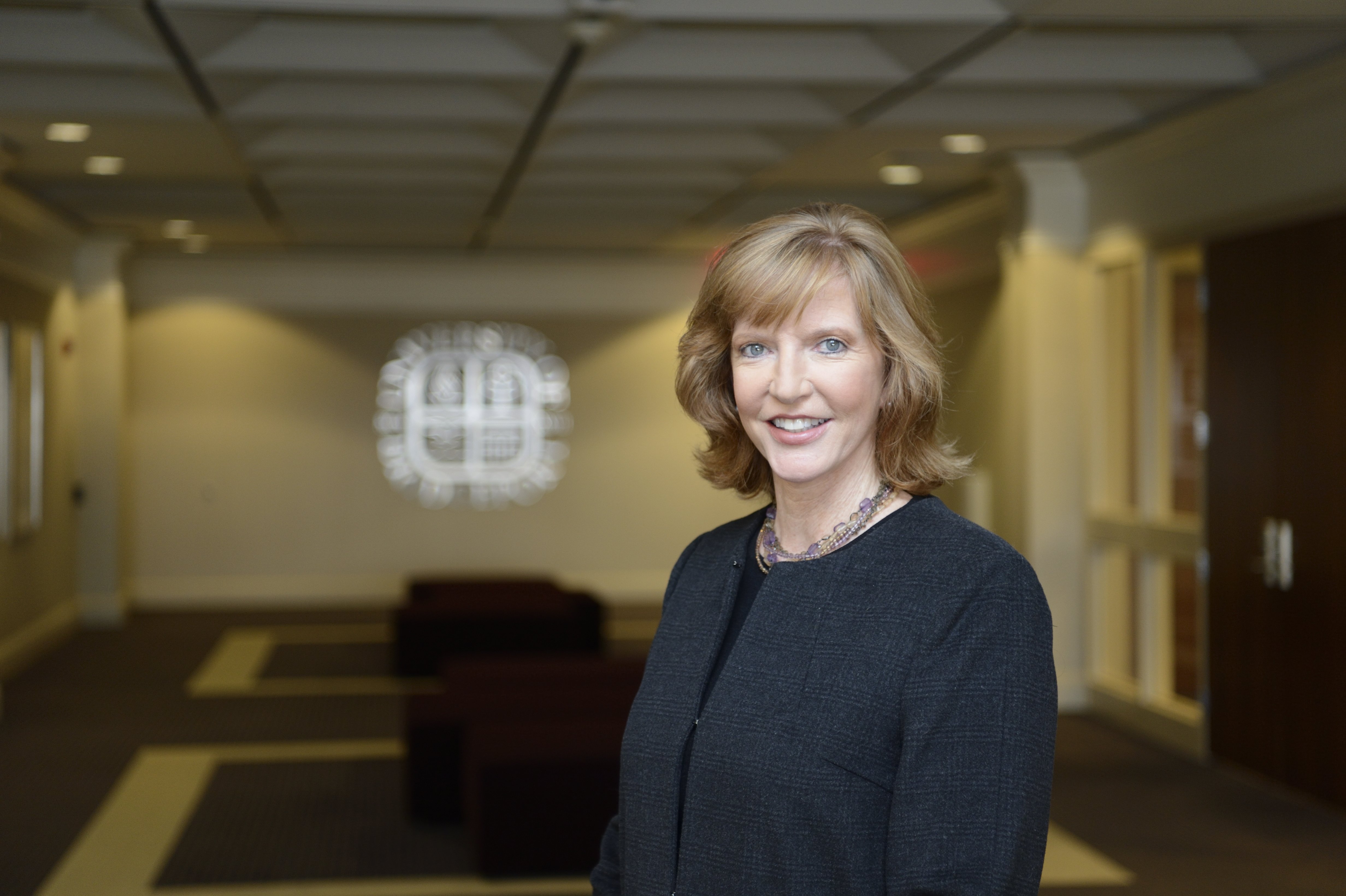 Trombley is a noted Mark Twain scholar who was president of Pitzer for 13 years ending in 2015. She then became president at Huntington Library, Art Collections and Botanical Gardens before moving to the University of Bridgeport this year. When she decided on her next college presidency, she thought about the experiences shared by the current generation of students.
Trombley is a noted Mark Twain scholar who was president of Pitzer for 13 years ending in 2015. She then became president at Huntington Library, Art Collections and Botanical Gardens before moving to the University of Bridgeport this year. When she decided on her next college presidency, she thought about the experiences shared by the current generation of students.
Today’s students have lived through the Great Recession and often have a sense of an unstable world, Trombley said. As a result, they feel a great deal of pressure to decide what they want to do in their careers. They’ve grown up with unprecedented levels of connectivity through technology yet still hunger for a human touch.
Trombley found herself attracted to Bridgeport because of deep connections between the university and the city. Bridgeport has many first-generation students who, along with their parents, want to know what return they will get on the money they invest in education, she said. The university supports students as they seek careers.
It is in the right spot, Trombley said. Bridgeport is located close enough to both Boston and New York City to provide access to internships in both locations, as well as in its home city.
At the same time, Bridgeport is still a great place for the liberal arts, Trombley said. Its undergraduate programs have a liberal arts core, plus it has graduate and professional programs.
“What makes Bridgeport different is it has always been a university that has connected education with careers,” Trombley said. “This is part of our DNA.”
Marvin Krislov made many of the same points last year when he decided to move from Oberlin College in Ohio to Pace University in New York City and nearby Westchester County. At the time, he said higher education was changing and emphasized Pace as a place that has long helped first-generation students. He hit those same themes in a recent interview, saying Pace is trying to elevate students into good first jobs that offer plenty of potential growth.
A Self-Conscious Step
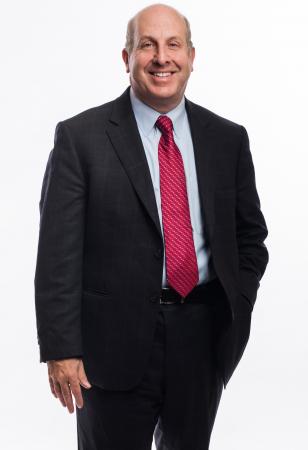 Krislov acknowledged thinking that the Oberlin-to-Pace transition was not a typical move. He felt self-conscious about that fact when he was considering it.
Krislov acknowledged thinking that the Oberlin-to-Pace transition was not a typical move. He felt self-conscious about that fact when he was considering it.
“With Pace, it was not necessarily in my professional and social circle,” he said. “I think that it was a decision to do something when I met the students and really learned about the mission. It was a decision to do something that I thought made a difference in the lives of others and I was not going to focus, necessarily, on how certain people might view that choice.”
Krislov pointed out that he has “probably zigged and zagged” in his career more than many college presidents. Before leading Oberlin, he was vice president and general counsel at the University of Michigan, leading the university’s successful legal defense of affirmative action in front of the U.S. Supreme Court. He also spent time in Washington, D.C., at the U.S. Department of Labor, and in President Clinton’s administration in the Office of the Counsel to the President.
Howard, at Robert Morris, picked up on the same theme of taking an alternative career path even before jumping from liberal arts college to career-oriented institution. He emphasized his own “eclectic” background and the ways he has often walked the line between the liberal arts and other types of institutions.
Before becoming Hampden-Sydney president, Howard was vice president of the University of Oklahoma and directed its honors college leadership center. He also spent time at several large companies.
While at the Air Force Academy -- which is ranked as a top liberal arts institution -- Howard was always thinking about his profession as it related to his education, he said. Later, at Oklahoma, Howard enjoyed working in the honors college, which he called a proxy within a university for a liberal arts institution. So he made a deliberate decision to become president of a liberal arts college where he could find a small, intimate learning environment. While at Hampden-Sydney, he worked to stay true to liberal arts roots while examining alumni careers and coordinating with the career services office in order to help students think about their futures after college.
Because he didn’t rise through the ranks of academia, Howard would qualify as a nontraditional president under many definitions. That has probably made it easier for him to take a nontraditional career path after becoming a college president, he said.
“I have moved 13 times,” he said. “My wife and my kids, we’ve been in many different parts of civil society, and the ability to see yourself in a different place and space is not as far-fetched with my background.”
Of course, traditional presidents can also make unexpected career moves. College presidents in general are changing jobs more and staying at one institution for shorter periods of time than in the past, research has found. It may only be natural that they would try different types of institutions.
“After 13 years as a liberal arts college president, I was ready to do it,” Trombley said. “This is just a more complicated puzzle, and that, to me, is extremely attractive.”
Liberal arts institutions fall into a category of college in which leaders are less likely to have past experience as a college president or university chancellor, according to data in the latest edition of the American College President study form the American Council on Education, which was released in June 2017. Presidents at more complex institutions are more likely to have been presidents in their immediate prior positions.
Only 15.7 percent of presidents at private not-for-profit bachelor’s-level institutions had experience as a higher ed CEO, the study found. That was less than half as many presidents as had such experience at public bachelor’s-level institutions, which was 32.3 percent. It was also lower than the portion of presidents with higher ed CEO experience at both public and private master’s and doctorate-granting institutions, which ranged from about 21 percent to 28 percent.
The American College President study went on to note the pressures mounting on higher education: flattening enrollment, diversifying student bodies, funding volatility, technological change and political upheaval. Presidents must be able to guide institutions through innovation, it found: “Externally, degrees and jobs are quickly becoming the way in which consumers and investors evaluate the performance of colleges and universities, a perspective that is still anathema to many campus stakeholders,” the report said. “Balancing these conflicting views requires of presidents the ability to soothe tensions, guide culture and process change, and communicate value, all while making their campus more cost-effective.”
Addressing Challenges and Change
With all of the challenges higher education faces, some presidents think career-oriented institutions are in the right place at the right time.
“In this day and age, the way that the technology is changing and the needs of people going into careers are changing, you need to have a modicum of flexibility as an institution,” Howard said. “We at Robert Morris are pretty good at that. Some institutions are just a little bit more comfortable with more change.”
It’s also clear that elite liberal arts colleges come with their own unique challenges for presidents to tackle, however. Those challenges can take their toll over time.
Privately, some presidents will say it can be difficult to smooth tensions and implement change at liberal arts institutions that have long, storied histories. There is simply a different mind-set among faculty members and students on a remote campus versus those who live in large urban areas, they say. Liberal arts colleges whose boards are stacked with alumni also tend to be more focused on how things were in the past than how they could be in the future.
Take, for instance, difficulties encountered by Krislov and Trombley. Neither president rehashed these cases in recent interviews, but they are well documented nonetheless.
Trombley was recognized for attracting students to Pitzer and for her fund-raising prowess. Yet the faculty at Pitzer voted no confidence in her as she was about to step down amid tensions over shared governance and whether the dean of the faculty’s contract should be renewed. Krislov went through controversies at Oberlin when he said no to demands from black students, when a professor’s anti-Semitic remarks on social media captured attention and when Oberlin made buyout offers with a nondisparagement clause.
“In some ways, the more elite the independent college, the more complex and individually not sustainable the leadership appointments are, because the stakeholders are just really tough,” said Kenneth Kring, co-managing director of the global education practice at the consulting and search firm Korn Ferry.
Many presidents may still continue to love leading liberal arts colleges, of course. And those who decide to try moving to a career-oriented institution would be wise to remember that challenges won’t disappear with the change. They might just be different.
“There are concerns around who is the student and can I be successful providing both inputs that are familiar to me but also achieving some of the output standards,” Kring said. Presidents often see the opportunity to make a difference in areas like student persistence, job placement and even college rankings, he said.
Kring cautioned that it’s difficult to draw widespread conclusions because each individual president will have his or her own reasons for making a career move -- and every campus will have its own leadership needs.
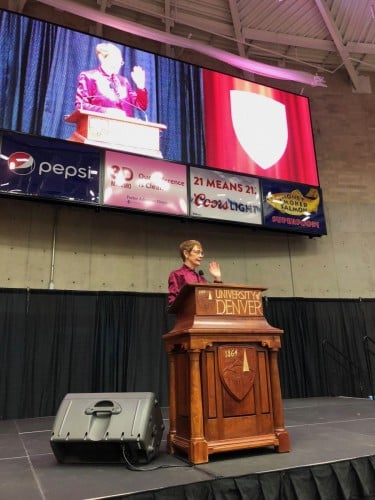 Take, for instance, the case of Rebecca Chopp, who became chancellor at the University of Denver in 2014. She’d been president at the wealthier Swarthmore College and spent her career at established institutions on the East Coast. But she found herself attracted to Denver.
Take, for instance, the case of Rebecca Chopp, who became chancellor at the University of Denver in 2014. She’d been president at the wealthier Swarthmore College and spent her career at established institutions on the East Coast. But she found herself attracted to Denver.
“I have always been downright infatuated with Denver and Colorado,” she said. “There is physical beauty and a culture of openness and ‘We can do it, let’s build together’ that is very refreshing.”
The university also has a long history of having half of its students in the undergraduate liberal arts and half in professional schools, adding a sense that both the practical and liberal arts sides are valuable. It went through financial troubles in the mid-1980s, then experienced a renaissance, Chopp said. Consequently, its board, faculty, staff and even the surrounding city are equipped to deal with changes rocking higher education.
Still, the private university lacks the endowment size and fund-raising tradition of a Swarthmore College. That means a different approach to budgeting and an opportunity to build up a fund-raising infrastructure.
Moving on from a liberal arts college to a larger institution required an increased willingness to delegate and work with teams, Chopp said. Scale and complexity bring challenges requiring a different set of leadership tools.
“What I loved about the liberal arts colleges is I would know the name of almost every senior who walked across the stage,” Chopp said. “I knew the names of the kids and sometimes the grandkids of many of the faculty or deans.”
Knowing everyone’s name simply isn’t possible at the University of Denver, which counted 5,765 undergraduates and 5,669 graduate students enrolled in the fall of 2017.
Chopp recommends any president changing jobs focus on learning the culture of the new institution.
“It has underscored for me how vastly different institutions are in their infrastructures, their missions,” Chopp said. “When I talk to people who are changing jobs -- provosts becoming presidents or something like that -- I always say the most profound thing you have to know is every culture is different and you have to really, really, really learn the culture.”


